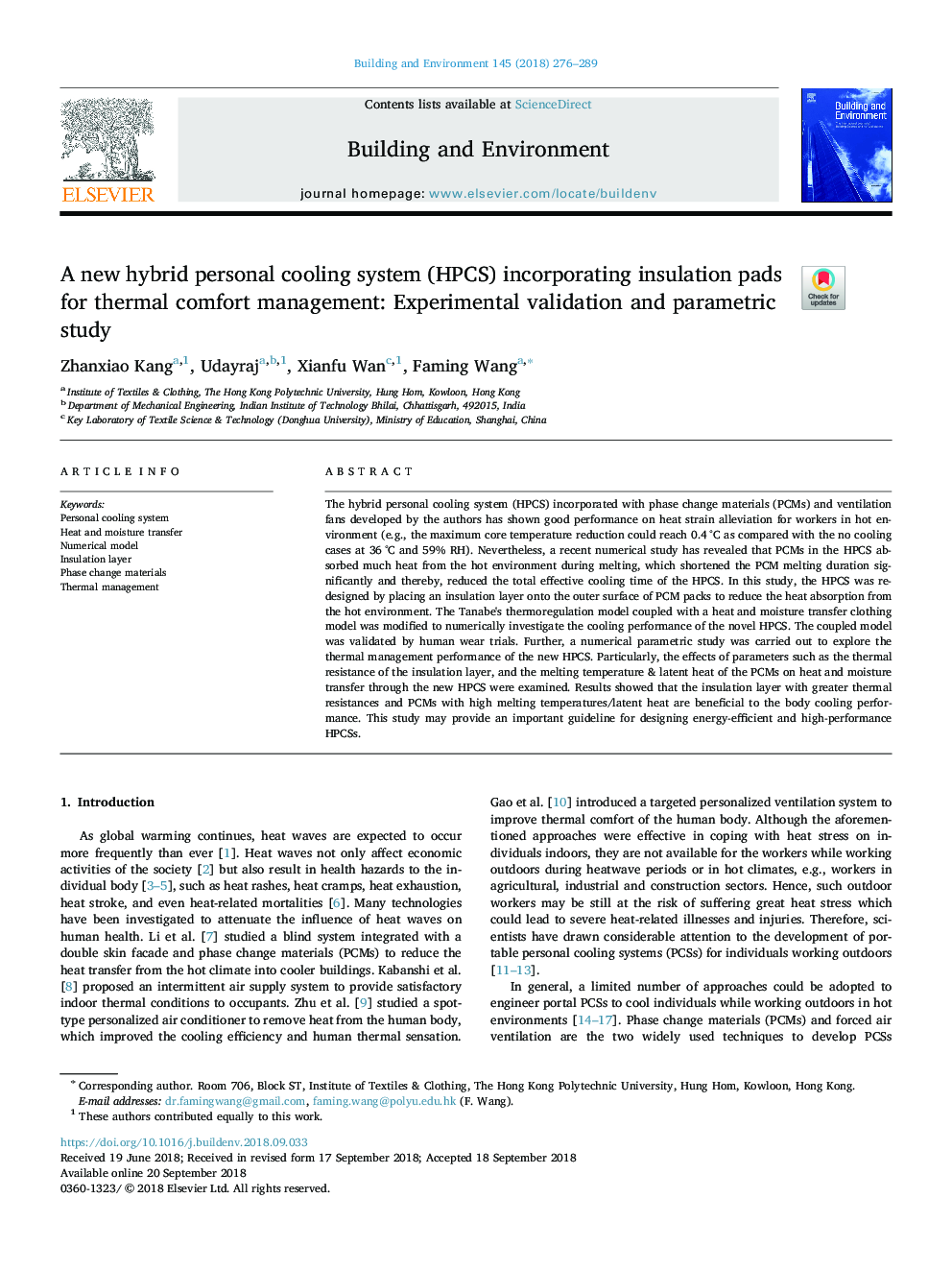| Article ID | Journal | Published Year | Pages | File Type |
|---|---|---|---|---|
| 11028184 | Building and Environment | 2018 | 14 Pages |
Abstract
The hybrid personal cooling system (HPCS) incorporated with phase change materials (PCMs) and ventilation fans developed by the authors has shown good performance on heat strain alleviation for workers in hot environment (e.g., the maximum core temperature reduction could reach 0.4â¯Â°C as compared with the no cooling cases at 36â¯Â°C and 59% RH). Nevertheless, a recent numerical study has revealed that PCMs in the HPCS absorbed much heat from the hot environment during melting, which shortened the PCM melting duration significantly and thereby, reduced the total effective cooling time of the HPCS. In this study, the HPCS was redesigned by placing an insulation layer onto the outer surface of PCM packs to reduce the heat absorption from the hot environment. The Tanabe's thermoregulation model coupled with a heat and moisture transfer clothing model was modified to numerically investigate the cooling performance of the novel HPCS. The coupled model was validated by human wear trials. Further, a numerical parametric study was carried out to explore the thermal management performance of the new HPCS. Particularly, the effects of parameters such as the thermal resistance of the insulation layer, and the melting temperature & latent heat of the PCMs on heat and moisture transfer through the new HPCS were examined. Results showed that the insulation layer with greater thermal resistances and PCMs with high melting temperatures/latent heat are beneficial to the body cooling performance. This study may provide an important guideline for designing energy-efficient and high-performance HPCSs.
Keywords
Related Topics
Physical Sciences and Engineering
Energy
Renewable Energy, Sustainability and the Environment
Authors
Zhanxiao Kang, Udayraj Udayraj, Xianfu Wan, Faming Wang,
